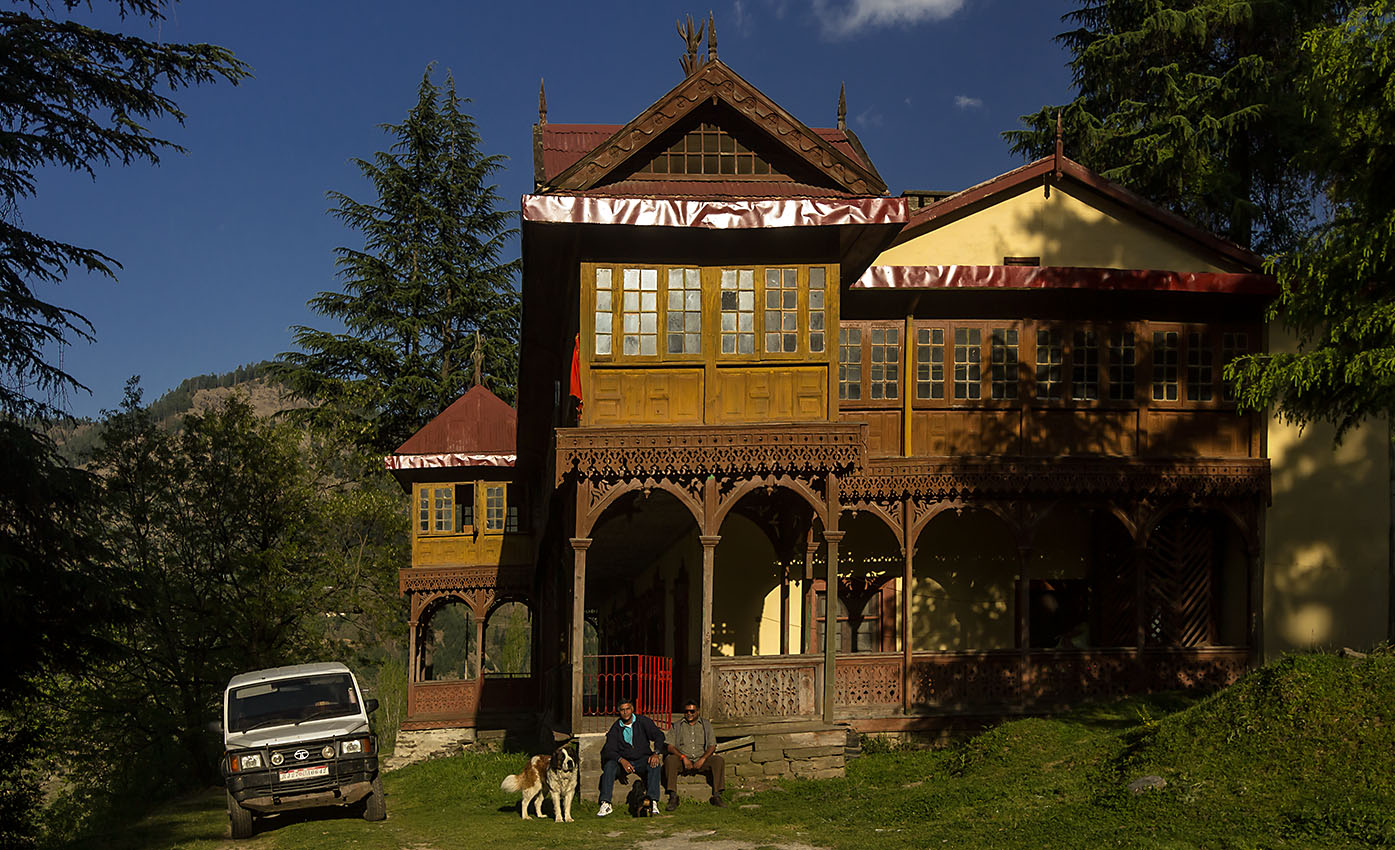If one pictures the dreamers who voyaged into India through the hippie trail, the last image to muster is that of an erstwhile German noble rattling across the Afghani frontiers on a magic bus. But such were the likes of Robert Huber, who made an overland trip to India in 1978 in solidarity with the flower power revolution. An unassuming entrant into India’s kaleidoscope, his distinct photographic style enamoured many native aristocrats and over time, their families embraced this free-spirited wanderer as their own.
One fine evening in Dalhousie, a couple of neat pegs and tobacco puffs triggered Robert into a rumination of sorts. As the owner of a brand-new white TATA Sumo, he pensively mediated the idea of traversing through the magnificent subcontinent on this beast like a wading white elephant. And in that tiny moment of eureka, Robert baptised his fourwheeled cruiser as Safed Haathi. The following day, he sought a painter to anoint the name on the vehicle’s front fender in the Devanagari script.
Over the course of their 1,73,000 kilometres-long odyssey across Nepal, Burma & every Indian state, Robert and Safed Haathi became synonymous with one another, unitedly forming a cult of their own. During this time, Safed Haathi rose to become the sole chronologer for contemporary India’s nobility, with a photographic documentation of portraiture, landscapes, ceremonies and architecture at an unprecedented scale. His ongoing chronicling of India’s nobility and North Eastern tribes earns Robert Huber a legendary status in his own right, and I personally consider Safed Haathi to be Rajputana’s very own Steve McCurry.



Two reasons dominate my conviction.
One, most of us would agree that photography is increasingly surpassing its conventional limits, and that in present times, anyone can call himself or herself a photographer. In a world that is saturated with photographers and content creators, Safed Haathi’s distinction as an age-old chronicler of royal Indian heritage gains paramountcy.
Right from the very start, Robert consciously averted the conventional path of exclusively documenting renowned destinations of princely India. Instead, he delved into the remotest pockets of India to unearth the bygone eras’ most precious gems. His white elephant had trampled over the dense thickets of Madhya Pradesh, Uttar Pradesh, Tripura and Odisha well before the discerning traveller could trace them on his/her map. Moreover, not only did he disavow the typical white man’s Oriental fascination, but infused his artistic flare into each one of his captured frames. Whether one considers his older compositions or his more recent work, they are all held together by a timelessly captivating force that renders modern-day montages into ghastly pallor.
Two, Safed Haathi remained subaltern in its approach and style. Which is to say that not only did Robert shy away from commercialising his documentation pursuits, but even after all these years, the veteran confesses about being constantly cash-strapped for the better part of his journey. In his own words, “The Safed Haathi project was about travelling to every state of India in the same car and photographing this vehicle over seven years at the most stunning places of India. I am not a commercial person by nature and thus, I might never be able to exploit the brand name fully. It’s more of a passion cultivated into a hobby.” His penchant to revisit a legacy that Prussia had forsaken back in 1918 caused him to stir away from the tide, and there are very few rivals to artistic expression that is unfettered by mercantile conventions. Robert’s rare gift of identifying potential destinations, sometimes even well before their own custodians or archaeologists, often translates his photographic pilgrimage into an act of service to travellers, historians, archaeologists, artists and explorers all over the world.
The fated departure of Robert’s TATA Sumo after 7.5 loyal years of service took place due to a mechanical failure in Sayla en route to Dungarpur. Soon after the palace mechanic at Udai Bilas declared the vehicle’s demise, a grieving Robert placed it in Harshwardhan Singhji’s iconic automobile museum, the Dungarpur Mews. Even today, one will find Robert’s daring expeditions with Safed Haathi showcased, not through common tropes or souvenirs, but on the vehicle’s densely scribbled rear fender. When seen from up close, these scribbles made for a diverse array of vernaculars that spelt out Safed Haathi. In other words, Robert took back hand-inscribed typographies by the numerous indigenous communities that he interacted with and documented from the three nations.
He laments the absolute lack of initiative on TATA’s part, but soon with the help of his friend Pradip Singhji of Gamph, found himself sponsored by Mahindra. Just within a week, Safed Haathi was resurrected as a Scorpio 4×4 SUV, and the legacy was carried forth by a changed machine that beats with a near identical pulse as its original incarnate. As its journey with Robert continues, the duo continues to produce spectacular visual testimonies to the respective households that opened their doors to them.
Come the most advanced equipment and techniques, it takes Robert’s offbeat approach to dare to capture bygone glories in bejewelled canine portraitures, eastern martial arts and wide angle personality shots of present-day Rajputs. Most recently, he has launched an aerial photography project using a DJI Phantom 2 Vision + drone, which he affectionately refers to as the White Eagle. I will let the aerial shots do their talking while signing off with a fair speculation that the day might not be far when Steve McCurry finds flattery in being titled South Asia’s very own Safed Haathi!
The writer is an author, blogger and editor-in-chief of Rajputana Collective.







